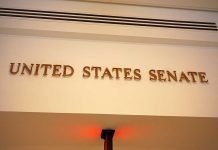
Over 300 Palestinians from war-torn Gaza have mysteriously appeared on South African tarmacs aboard chartered flights with no proper documentation, leaving authorities scrambling to uncover who orchestrated these shadow operations and why.
Story Snapshot
- Two chartered flights carrying over 300 Gazans arrived in South Africa without proper travel documents
- Passengers paid up to $2,000 each to shadowy organizations, unaware of their final destination
- South African intelligence services launched a full investigation into the mystery flights
- The incidents highlight exploitation of desperate refugees fleeing Gaza’s humanitarian crisis
Phantom Flights Expose Human Trafficking Network
The first red flag appeared on October 28, 2025, when 176 Palestinians disembarked from a chartered plane in Johannesburg. Passengers carried Palestinian passports but lacked exit stamps or proper travel documentation. South African authorities allowed them entry after humanitarian organizations intervened, but questions lingered about how they bypassed international border controls.
Two weeks later, a second flight carrying over 150 Palestinians triggered a 12-hour standoff on the tarmac. This time, South African officials refused immediate entry, holding the passengers in limbo while intelligence services investigated. The mystery deepened when passengers revealed they had been unaware of their final destination until a stopover in Kenya.
Follow the Money Trail to Al-Maged Europe
Investigations revealed passengers had paid substantial sums to Al-Maged Europe, a company promising safe passage from Gaza. Each passenger reportedly paid up to $2,000 for the journey, draining life savings for what they believed was legitimate emigration assistance. The Palestinian Embassy in South Africa condemned these organizations for exploiting vulnerable refugees desperate to escape Gaza’s deteriorating conditions.
The financial exploitation runs deeper than simple transportation fees. Reports suggest these operations may connect to Israel’s Voluntary Immigration Bureau, which allegedly coordinates with private companies to facilitate Gazan emigration. This shadowy network appears designed to profit from human desperation while potentially serving broader geopolitical objectives of reducing Gaza’s population through voluntary departure programs.
South Africa Caught Between Humanitarian Duty and National Security
President Cyril Ramaphosa faced an impossible choice. South Africa’s constitution mandates protection for refugees, and the country maintains visa-exempt policies for Palestinian passport holders. Yet allowing undocumented mass arrivals sets dangerous precedents for border security and immigration control.
Ramaphosa ultimately chose humanitarian principles over bureaucratic procedures, declaring South Africa would not return the refugees to Gaza’s active conflict zone. Gift of the Givers, South Africa’s largest humanitarian organization, stepped in to provide temporary housing and support. However, this compassionate response raises uncomfortable questions about whether South Africa inadvertently incentivized future irregular migration schemes.
Broader Implications for Refugee Protection
This incident exposes critical gaps in international refugee protection systems. Traditional asylum processes often prove inadequate for people fleeing active conflict zones, creating opportunities for unscrupulous operators to exploit desperate families. The mystery flights demonstrate how vulnerable populations become commodities in shadow economies that operate beyond government oversight.
The timing also complicates South Africa’s relationship with Israel, as the country pursues legal action against Israel at the International Court of Justice. Critics argue these flights may represent calculated attempts to create diplomatic embarrassment for South Africa while simultaneously advancing Israeli policies to reduce Gaza’s population. Whether coordinated or coincidental, the arrivals strain South Africa’s resources and test its commitment to Palestinian solidarity.
Sources:
After Hundreds of Gazans Arrive on Mystery Flights, South Africa Asks How












